I did kriging using spPredict from spBayes package for Bayesian kriging and krige from gstat package for non-Bayesian kriging. I didn't use any covariates (only constant mean term) and used 1283 points for kriging. Out of 1283 points, 1012 are new locations and 271 are locations where I have data.
After finishing the kriging, to check the predictive performance I looked into the kriged values of 271 locations. And then I realized they are exactly same as the data for 271 locations. I have done kriging with the same code (but with covariates) and haven't had this kind of problem at all. I have no idea what is going wrong... Here are my simple code for spPredict and krige. I also attach the calibration plot. I would appreciate a lot for any advice.
pred.covar=cbind(rep(1,1283))
spPredict(fitted, pred.coords=grid.fin_km, pred.covars=pred.covar,
start = burn.in, thin = 10, verbose=FALSE)
krige(formula=n_temp~1, locations=~x1+x2, data=merged.f, newdata=grid.fin_km,
model=var.fit.w1)
